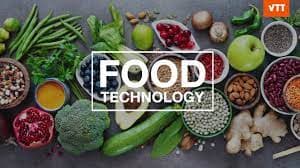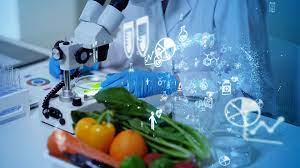
Food Technology: Innovations Shaping the Future of Food
Food technology is a rapidly evolving field that encompasses the application of science and engineering to the production, processing, preservation, packaging, and distribution of food. From plant-based meat alternatives to vertical farming, food technology is transforming the way we produce, consume, and think about food. In this article, we will explore some of the latest innovations in food technology and their potential impact on our food system.

- Plant-Based Meat Alternatives
Plant-based meat alternatives have been around for decades, but recent advances in food technology have made them more realistic and palatable than ever before. Companies like Beyond Meat and Impossible Foods use a combination of plant-based proteins, fats, and flavorings to create meatless burgers, sausages, and other products that look, taste, and cook like real meat. Plant-based meat alternatives have the potential to reduce the environmental impact of meat production, while also providing a healthier, more sustainable alternative for consumers.
- Vertical Farming
Vertical farming is a method of growing crops in stacked layers, using artificial lighting and climate control to create optimal growing conditions. Vertical farming has the potential to increase crop yields, reduce water usage and eliminate the need for pesticides and herbicides. Additionally, vertical farming can be done in urban areas, bringing fresh, locally-grown produce to areas with limited space and resources.
- 3D Printing
3D printing is a technology that uses computer-aided design (CAD) software to create three-dimensional objects by layering materials, such as plastic or metal. In the food industry, 3D printing has the potential to create customized, personalized foods with specific nutritional profiles or flavors. Additionally, 3D printing can be used to create unique shapes and textures that would be difficult or impossible to achieve with traditional food manufacturing methods.
- Food Preservation and Packaging
Food preservation and packaging technologies are essential for keeping food safe and fresh during transportation and storage. Innovations in this area include the use of smart packaging that can detect and report on the quality and freshness of food, as well as the use of natural antimicrobial agents to extend the shelf life of food without the use of synthetic preservatives.
- Blockchain Technology
Blockchain technology is a secure, decentralized ledger that can be used to track and verify the origin, production, and distribution of food products. By providing a transparent, tamper-proof record of the entire supply chain, blockchain technology can help to reduce food fraud, improve food safety, and increase trust between consumers and producers.
Conclusion
Food technology is an exciting and rapidly evolving field that has the potential to revolutionize the way we produce, consume, and think about food. From plant-based meat alternatives to vertical farming, 3D printing, food preservation, and blockchain technology, food technology is shaping the future of food in exciting and innovative ways. While these technologies are not without their challenges, they represent a significant opportunity to create a more sustainable, healthy, and equitable food system for all. As food technology continues to evolve, it will be fascinating to see how these innovations are adopted and integrated into our daily lives.
